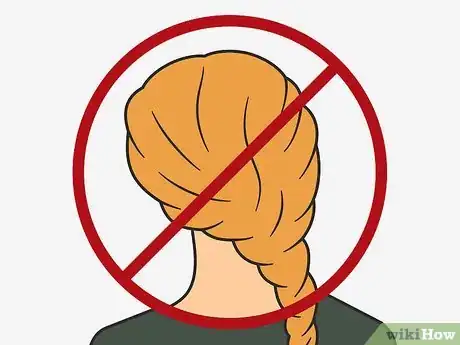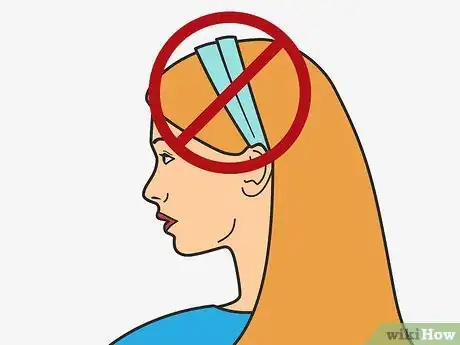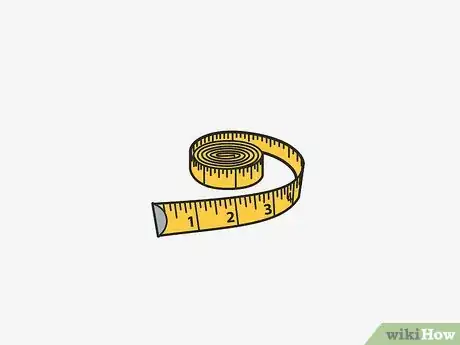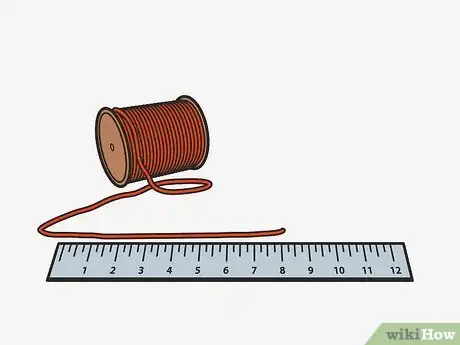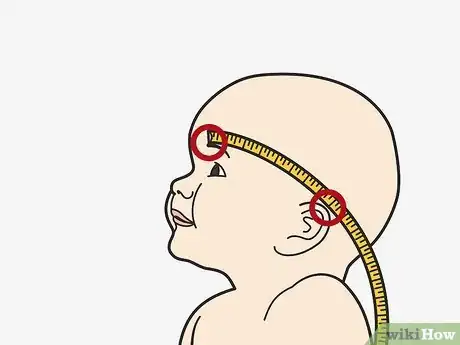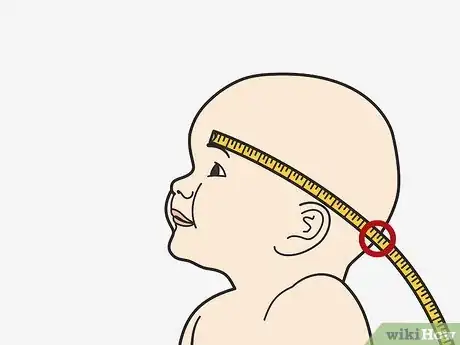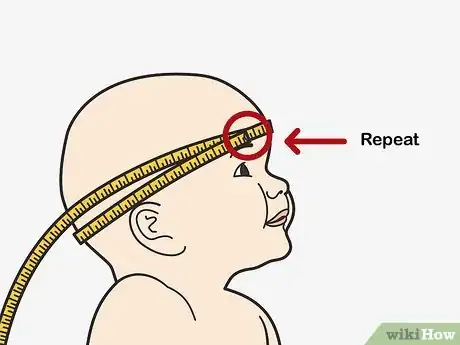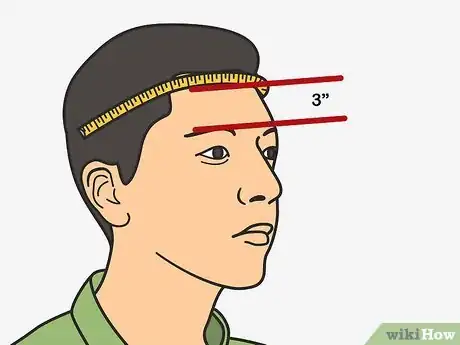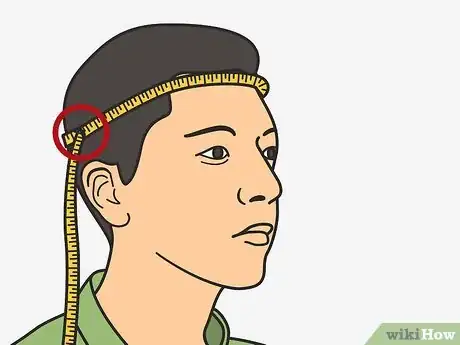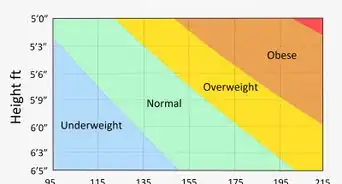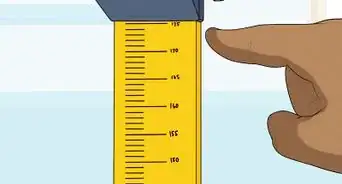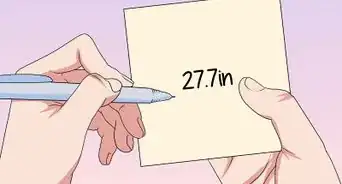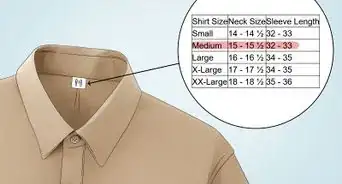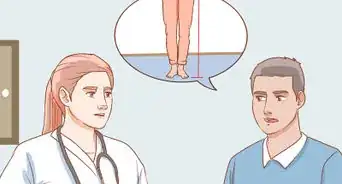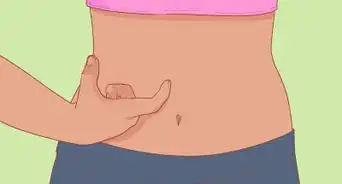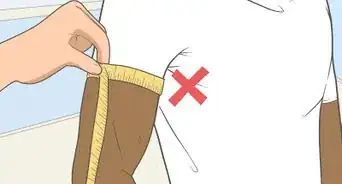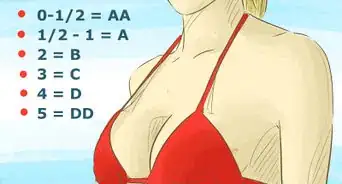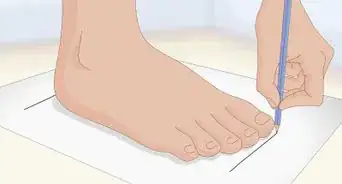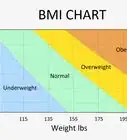This article was co-authored by wikiHow Staff. Our trained team of editors and researchers validate articles for accuracy and comprehensiveness. wikiHow's Content Management Team carefully monitors the work from our editorial staff to ensure that each article is backed by trusted research and meets our high quality standards.
This article has been viewed 123,682 times.
Learn more...
Whether you want to measure your child to ensure they're developing properly or yourself to get fitted for a hat, it's important to know the right way to measure the circumference of a head. Having the right type of measuring tape is key, but it's also important to know the proper place to set the tape around the head. The position is slightly different for babies and adults, so be careful to adjust it accordingly.
Steps
Preparing for Measuring
-
1Remove any hairstyles that might affect the measurements. When you’re measuring the circumference of a head, certain hairstyles can add bulk and throw off the measurements. If the person whose head you’re measuring is wearing braids, a bun, or a ponytail, remove them before the measurements.
-
2Take out any hair adornments that might interfere with measurements. Even if your hair isn’t in a style that adds bulk to your head, the way you’re wearing it can affect your measurements. Remove any clips, barrettes, or other accessories that might alter the measurements.Advertisement
-
3Use a flexible, non-stretchable measuring tape. If the tape can stretch, you won’t get an accurate measurement for the head circumference. Instead, choose a flexible plastic tape with no stretch. A style that allows you to insert one end into the other is ideal if you’re measuring an infant’s head.[1]
- You can try using a metal measuring tape, but the metal typically doesn't curve around the head as easily as a plastic style.
-
4Measure with a string alternatively. If you don’t have a flexible, non-stretchable measuring tape, you can use a non-stretchy piece of string. Wrap it around the head as suggested and mark it to indicate the circumference. Next, lay the string out on a flat surface and use a ruler to measure it. The measurements won’t be as accurate, but it can still give you a good idea of the head circumference.[2]
Measuring a Baby’s Head
-
1Place the measuring tape just above the eyebrows and ears. It’s important to measure the child’s circumference at the widest part of the head. Set the tape right above the ears so it's nearly touching them and line it up on forehead so it sits over the brows.[3]
-
2Pull the tape around the back where the head slopes up from the neck. With the measuring tape in place above the ears and brows, wrap it around the back of the head. Be careful not to pull it too tight.[4]
-
3Lay the tape where the head slopes up from the neck. Make sure the tape lays flat against the back of head where the slope is most pronounced. Overlap the tape slightly to get the most accurate measurement, and note the number. [5]
- Measuring a baby’s head circumference can be important to ensure that their brain is growing and developing as it should. You can find appropriate growth charts for boys and girls on the Center for Disease Control's website at https://www.cdc.gov/growthcharts/who_charts.htm#The%20WHO%20Growth%20Charts. If you’re concerned about the measurement, consult your child’s doctor.
-
4Repeat the process to ensure that the measurement is accurate. To ensure that your measurement is correct, it’s a good idea to check your results a second time. Measure the head a second time -- and even a third -- to verify the measurement.[6]
Figuring an Adult's Head
-
1Place the measuring tape 1-inch (2.5-cm) above the tops of your ears. When measuring an adult head, the tape should be above the ears just as it would be for a baby. However, instead of placing it right above the ears, set the tape so it’s about an a little bit above the top of the ears.[7]
-
2Sit the tape about 3-inches (7.5-cm) above the brows. To get an accurate measurement, it's important that the tape rest above the brows in addition to the eyes. Make sure that it lies flat against the forehead.[8]
-
3Wrap the tape around the back to rest in the middle of the occipital bone. Pull the tape around the back of the head, making sure to keep it in place across the forehead. You should place the tape so it sits in the middle of the bone, which is the small bump that you can feel at the back of the head.[9]
- Don’t pull the measuring tape too tightly around the head, or you won’t get an accurate measurement.
-
4Pinch your fingers over the spot where the tape meets the other end and remove it. You won't be able to read the tape at the back of your head, so use your fingers to mark the spot where the end of the tape sits against the rest of the tape. Carefully lift the tape off your head and note the measurement.
-
5Measure your head twice for accuracy. Just as when you’re measuring a child’s head, it’s important to verify your measurement. Repeat the process a second time and possibly a third to ensure that the circumference is accurate.[10]
Things You’ll Need
- Flexible, non-stretchable measuring tape
References
- ↑ https://depts.washington.edu/growth/module5/text/page5a.htm
- ↑ http://www.genaconti.com/Measuring.htm
- ↑ https://www.babycenter.com/0_growth-charts-taking-your-babys-measurements_1620.bc?page=2
- ↑ https://www.babycenter.com/0_growth-charts-taking-your-babys-measurements_1620.bc?page=2
- ↑ https://www.babycenter.com/0_growth-charts-taking-your-babys-measurements_1620.bc?page=2
- ↑ https://www.babycenter.com/0_growth-charts-taking-your-babys-measurements_1620.bc?page=2
- ↑ http://www.genaconti.com/Measuring.htm
- ↑ http://www.genaconti.com/Measuring.htm
- ↑ http://www.genaconti.com/Measuring.htm
About This Article
To measure the circumference of your head, choose a flexible plastic tape measure that won’t stretch to get an accurate measurement. When you’re ready to measure, place the tape so it rests 1 inch above the tops of your ears, 3 inches above the tops of your eyebrows, and directly across the back of your head where you can feel a small bump or bone. Use your fingers to mark the spot where the tape meets, remove it to see the number, and repeat to make sure you’ve been accurate. If you don't have a tape measure, wrap a non-stretchy piece of string around your head, then lay it flat next to a ruler. To learn how to measure a baby’s head, keep reading!
